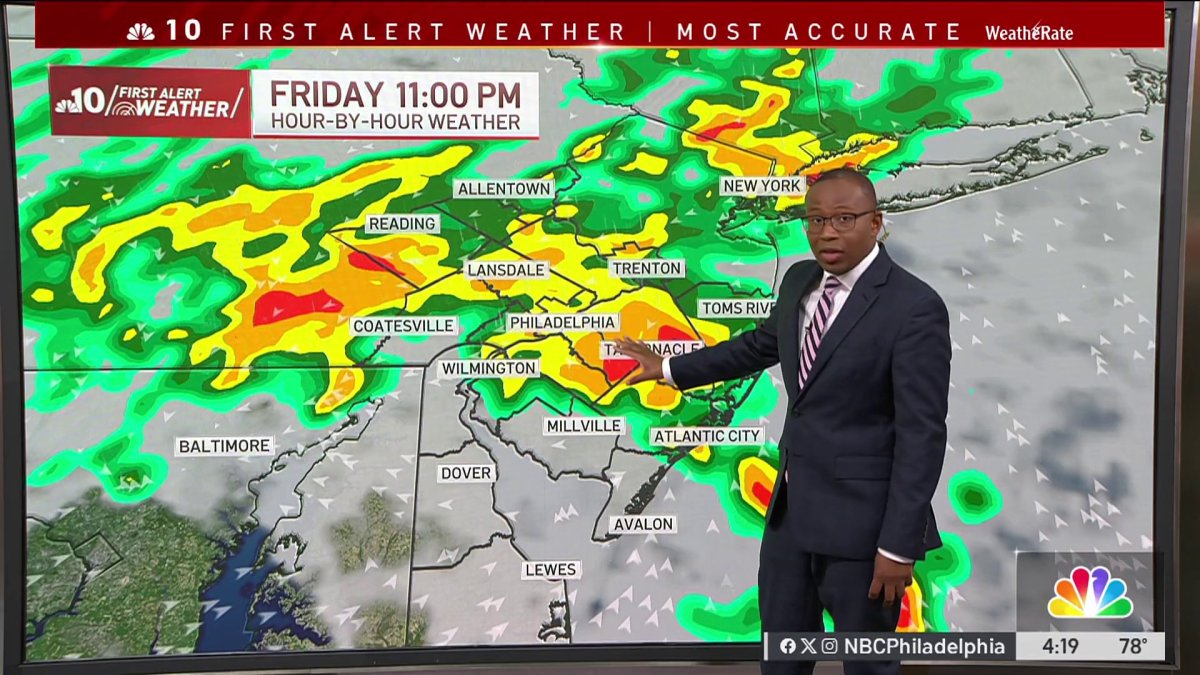The Philadelphia region is under a First Alert as potentially severe storms approach. These storms threaten to bring heavy rain, hail, and strong winds, raising the risk of flash flooding. Understanding the dangers of flash floods and knowing how to respond is crucial for the safety of you and your family. In this article, we’ll break down the current weather situation, explain what a flash flood warning means, and provide essential safety tips to help you stay informed and prepared.
With the potential for rapid and intense rainfall, it’s important to be aware of the key phrases: flash flood warning, flash flood warning near me, flash flood warning dallas, flash flood warning vs watch, flash flood warning utah, flash flood warning louisiana, flash flood warning san diego today, flash flood warning puerto rico, flash flood warning signs and flash flood warning oklahoma. These keywords will help you quickly access the information you need during this weather event. Stay tuned to FYM News for updates and stay safe.
Current Weather Situation in Philadelphia
NBC10 First Alert meteorologist Robert Johnson is closely monitoring a storm system that could impact all neighborhoods in the Philadelphia region. The primary concern is the potential for flooding downpours, which can quickly overwhelm drainage systems and lead to flash floods. Strong winds and hail are also possible, adding to the severity of the weather threat.
The NBC10 team has issued a First Alert, urging residents to take precautions. According to nbcphiladelphia.com, “A First Alert has been issued for all neighborhoods in the Philadelphia region. NBC10 First Alert meteorologist Robert Johnson is tracking storms that have the potential to bring flooding downpours, strong winds and hail.”
Understanding a Flash Flood Warning
A flash flood warning is issued when a flash flood is imminent or occurring. This means that rapid and extreme flow of high water is happening or is expected to begin within a short period of time. Flash floods are particularly dangerous because of their suddenness and the force of the water involved. They can occur within minutes or hours of heavy rainfall, making them difficult to predict and even more challenging to escape.
It is important to understand the difference between a flash flood watch and warning. A watch means that conditions are favorable for flash flooding to occur, while a warning means that it is happening now or is about to happen. When a flash flood warning is issued, immediate action is necessary to ensure your safety.
Essential Safety Tips During a Flash Flood Warning
When a flash flood warning is in effect, your safety is the top priority. Here are critical steps to take:
- Seek Higher Ground: Move to higher ground immediately. Don’t wait for the water to rise before evacuating.
- Avoid Flood-Prone Areas: Stay away from areas that are known to flood, such as low-lying spots, streams, and drainage channels.
- Never Drive Through Floodwaters: It only takes a few inches of fast-moving water to sweep a car away. Turn around, don’t drown.
- Monitor Weather Updates: Stay informed by monitoring weather updates on FYM News and other reliable sources.
- Heed Evacuation Orders: If authorities issue an evacuation order, follow it immediately.
According to ready.gov, “Never drive through floodwater. Cars and other vehicles can quickly be swept away in floodwaters.” This emphasizes the importance of avoiding driving in flooded areas at all costs.
Preparing Your Home for Potential Storms
Taking proactive measures to protect your home can significantly reduce the risk of damage from severe weather:
- Clear Gutters and Downspouts: Ensure that gutters and downspouts are clear of debris to allow water to flow freely.
- Secure Outdoor Items: Bring in or secure any outdoor items that could be blown away by strong winds, such as patio furniture, trash cans, and decorations.
- Have an Emergency Kit Ready: Prepare an emergency kit with essential supplies like water, food, flashlights, and a first-aid kit.
- Review Your Insurance Coverage: Make sure your flood insurance policy is up-to-date and provides adequate coverage.
Staying Informed About the Weather
Accessing reliable and timely weather information is essential for staying safe during severe weather events. Here are some ways to stay informed:
- FYM News Website and App: Check FYM News and Weather channel for the most up-to-date and accurate weather information in Philadelphia and the surrounding areas.
- NOAA Weather Radio: Have a NOAA Weather Radio on hand to receive alerts directly from the National Weather Service.
- Social Media: Follow local news outlets and weather channels on social media platforms for quick updates.
Key Takeaways and Final Thoughts
As the Philadelphia region braces for potential storms, it’s crucial to understand the risks and take the necessary precautions. A flash flood warning indicates immediate danger, and swift action is needed to protect yourself and your loved ones. Remember these critical steps:
- Understand the difference between a flash flood watch and a flash flood warning
- Move to higher ground immediately if a flash flood warning is issued.
- Avoid driving or walking through floodwaters.
- Stay informed about weather updates from reliable sources.
By staying informed and prepared, you can minimize the impact of these severe weather events and ensure your safety. Tune in to FYM News for continued updates and stay vigilant during this First Alert.

Leave a Reply